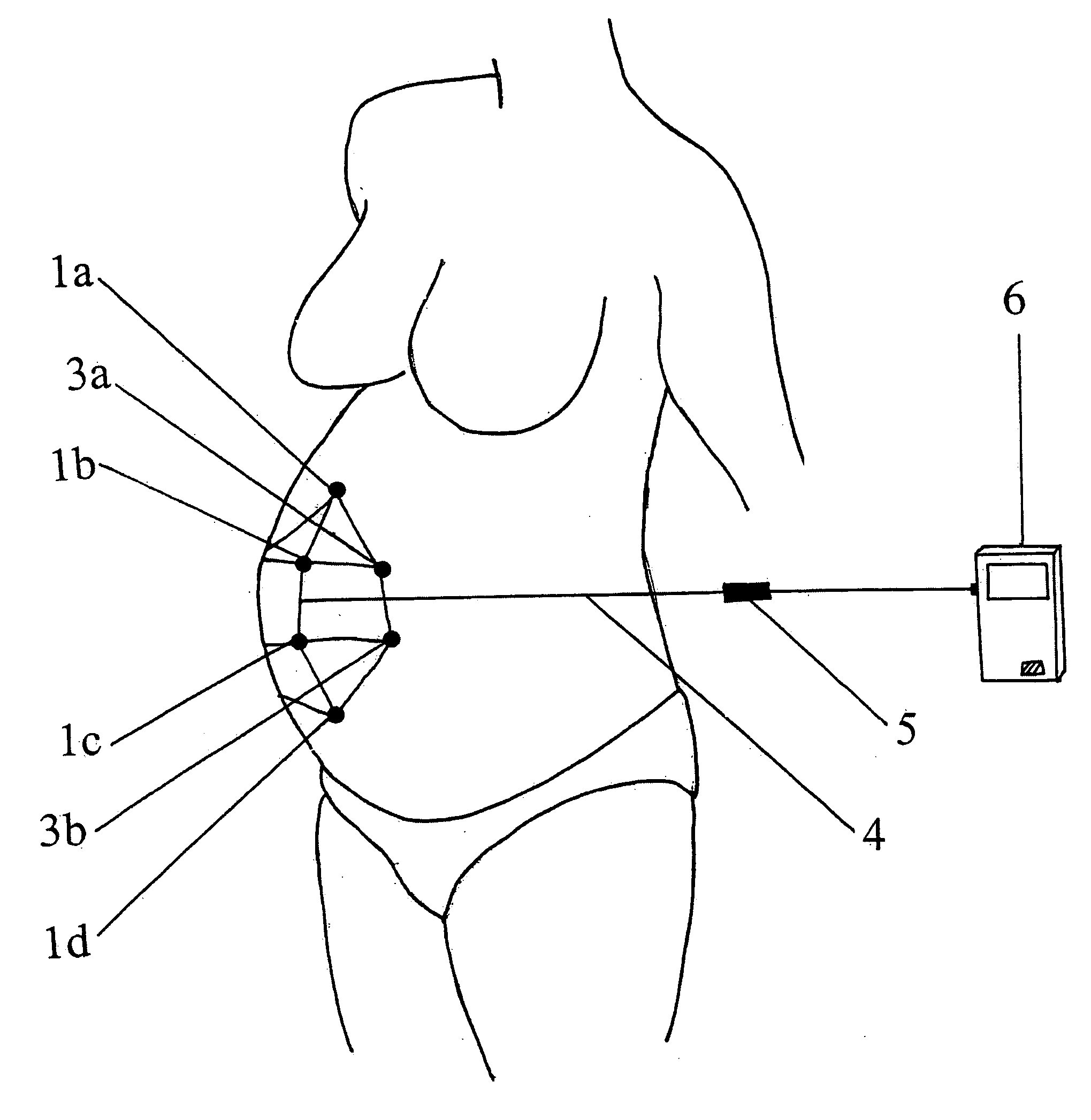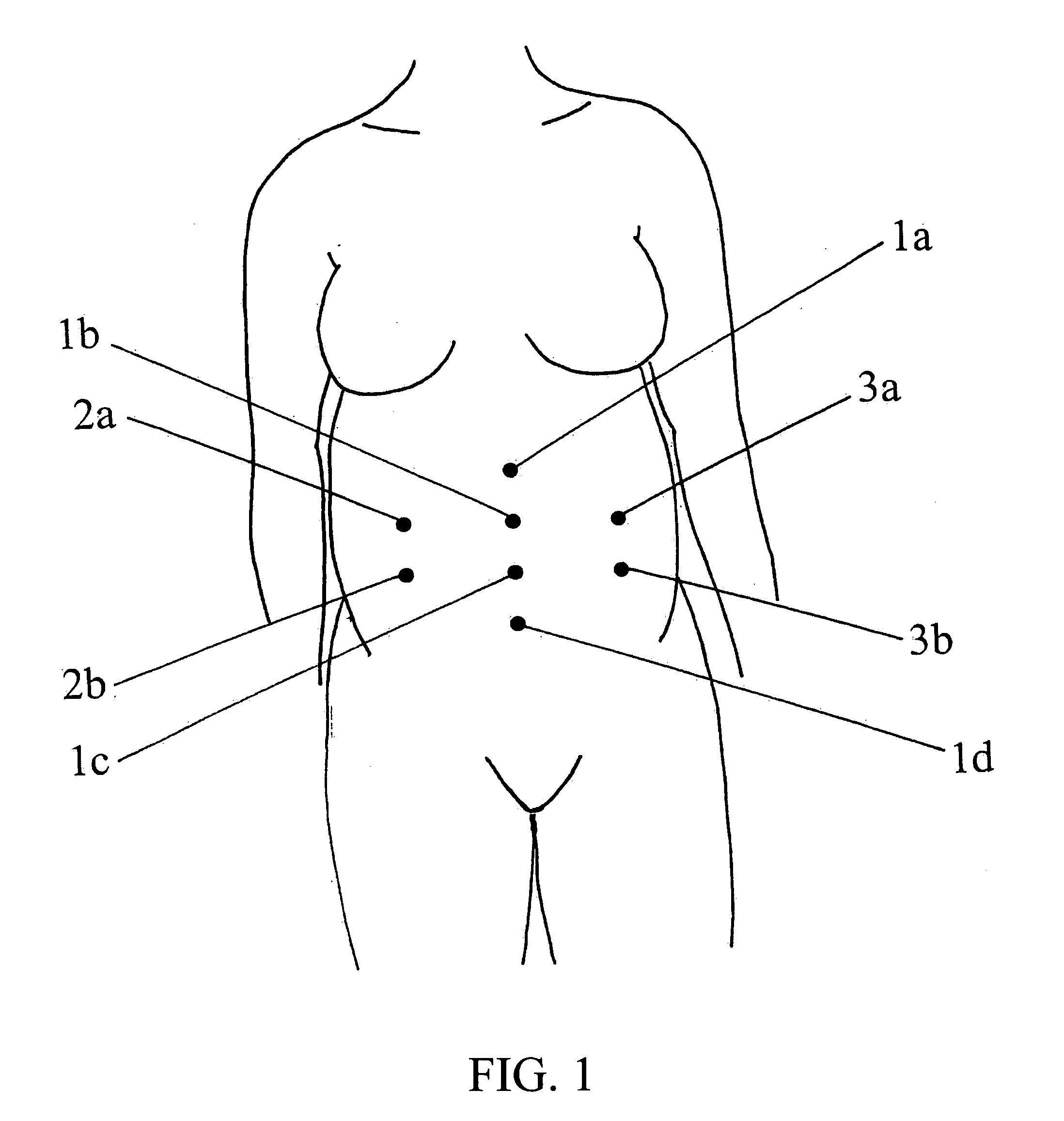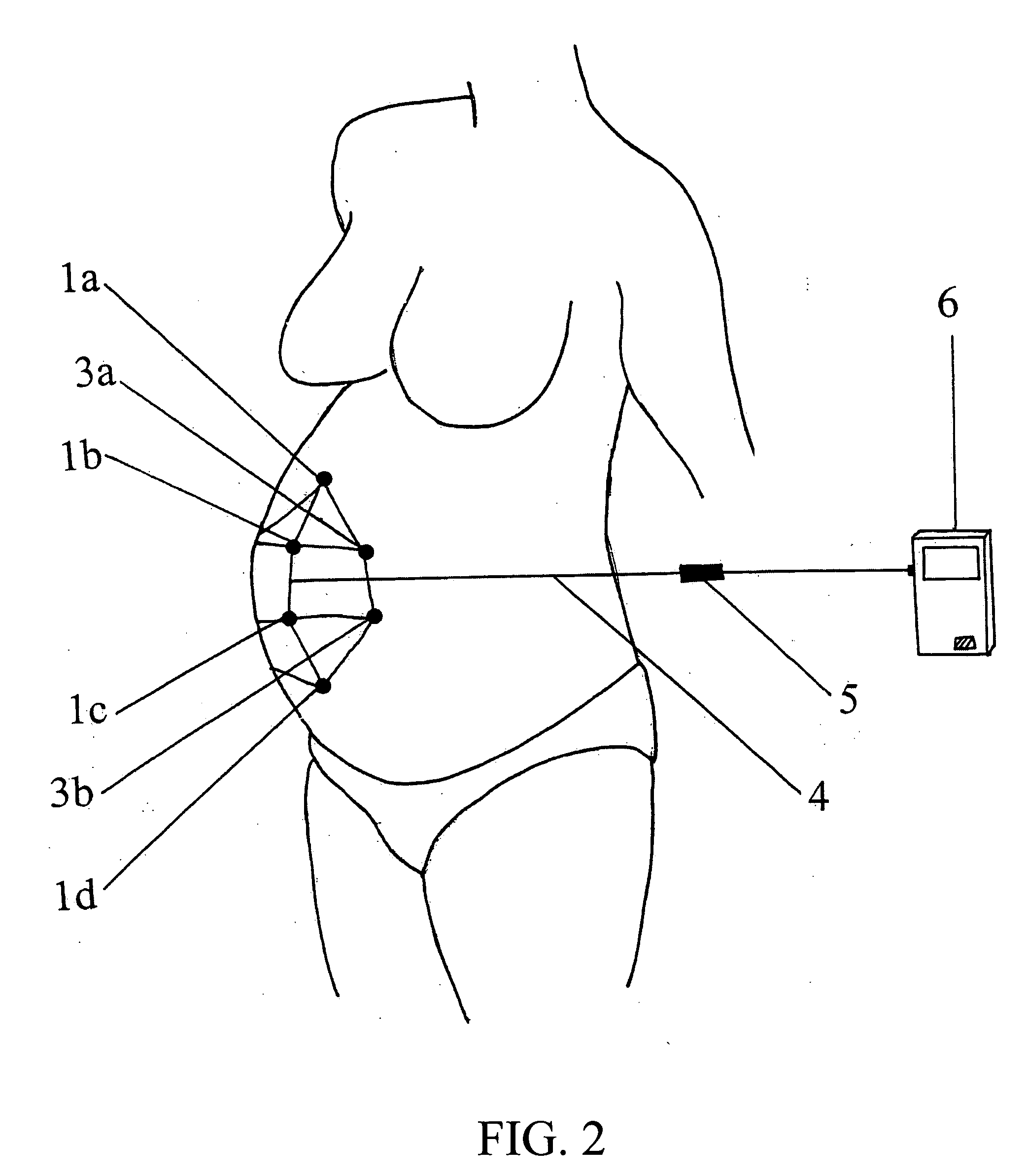Maternal-fetal monitoring system
a monitoring system and mother-fetus technology, applied in the field of mother-fetus monitoring system, can solve the problems of limited predictive value of tests, affecting the health of the fetus, and entanglement of patient expense and inconvenience, so as to reduce the risk of the fetus' health and eliminate uncomfortable equipmen
- Summary
- Abstract
- Description
- Claims
- Application Information
AI Technical Summary
Benefits of technology
Problems solved by technology
Method used
Image
Examples
example 1
Method for Personalizing a Sensor Mesh of the Invention
[0180] In one embodiment of the invention, a mesh of 20 electrodes was used to collect ECG signals. Each of the electrodes was selectively multiplexed into / out of the ICA and Pan Tompkins algorithm operations, depending on the quality of the signal and the TF for the fetal ECG output from Pan Tompkins operator(s). At the output of the ICA algorithm operator(s), the fetal ECG signal was correlated with 8 prefiltered raw signals. The 8 correlation coefficients correspond to the influence of the fetal heart in the different electrodes. The electrodes with the lowest correlation coefficients were switched out of the ICA / Pan Tompkins algorithm operations and other electrodes were switched into those operations to find the best set of electrodes for finding the fetal ECG.
[0181] By providing a method for personalizing a sensor mesh, the subject invention combines cumbersome individual sensor leads into a single cable, to enable the s...
example 2
Maternal-Fetal Monitoring System of the Invention
[0182] As illustrated in FIG. 14, a maternal-fetal monitoring system 200 of the present invention is provided, wherein the system comprises an electrode mesh 202, an amplifier, at least one filter 204, and a processor for running an ICA algorithm 206, preferably Mermaid, and calculating a Trust Factor 208, to provide clinical information regarding maternal-fetal health. The electrode mesh has 10 electrodes, which are placed on the maternal abdomen. Electrodes having offset tabs that aid in eliminating noise artifacts are preferred. In this example, 1″¼ Blue sensor Ag / AgCl electrodes are used. A 10 lead shielded cable is used to connect the electrodes to the amplifier.
[0183] The amplifier of the subject invention takes into account the fetal ECG, which typically is around 10 μV to 50 μV in amplitude. In a preferred embodiment, the amplifier of the invention is a high-resolution, low-noise unipolar amplifier in which all channels are ...
example 3
Comparison of Intra-Uterine Pressure Values Using a Neural Network of the Subject Invention versus an Intra-Uterine Pressure Catheter (IUPC)
[0195] An intelligence system (i.e., neural network system) has been trained to predict the IUP from the electrical signals obtained from the abdominal ECG electrodes (EHG). The network was trained with three different patients and can be used to create an estimated non-invasive measure of IUP in patients. FIGS. 15A-C show the output of the neural network and the IUPC signal for three different data sets A, B, and C. The mean squared error (MSE) and correlation coefficient (CorrCoef) for each data set are provided in Table 1. As can be seen most of the peaks in a commercially available IUP catheter signal are well captured by the neural network of the subject invention. The high correlation coefficient in test data further supports the fact that the network has learnt the relationship.
TABLE 1Quantitative Comparison of Values from an MLP of th...
PUM
 Login to View More
Login to View More Abstract
Description
Claims
Application Information
 Login to View More
Login to View More - R&D
- Intellectual Property
- Life Sciences
- Materials
- Tech Scout
- Unparalleled Data Quality
- Higher Quality Content
- 60% Fewer Hallucinations
Browse by: Latest US Patents, China's latest patents, Technical Efficacy Thesaurus, Application Domain, Technology Topic, Popular Technical Reports.
© 2025 PatSnap. All rights reserved.Legal|Privacy policy|Modern Slavery Act Transparency Statement|Sitemap|About US| Contact US: help@patsnap.com



